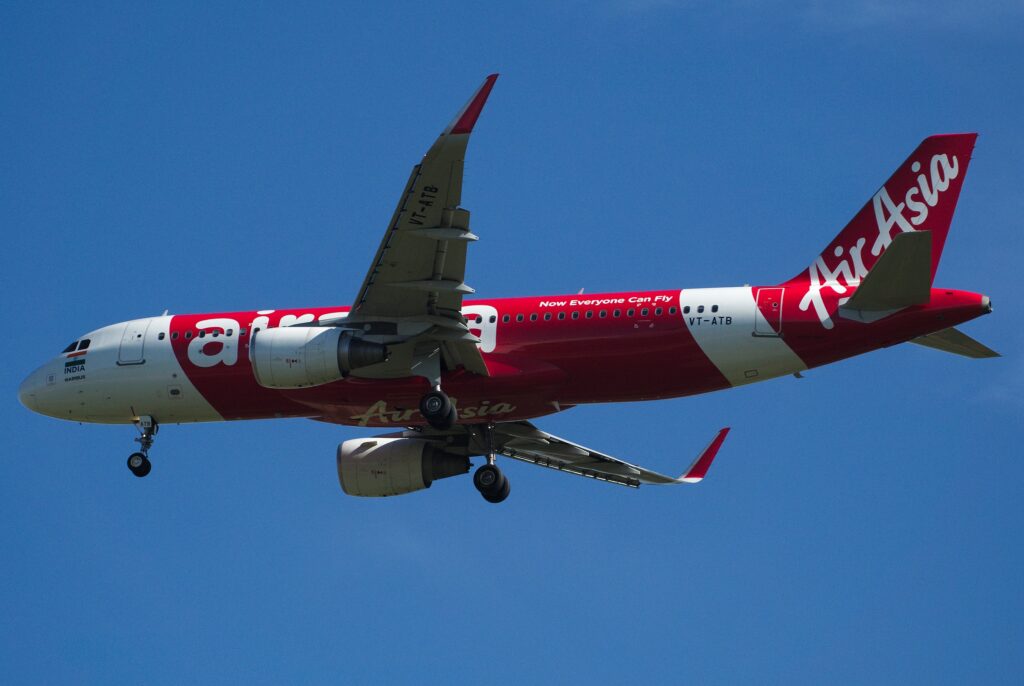LONDON – India’s aviation regulator, the DGCA, recently fined Air Asia India for Rs.20 Lakhs (Approx $24,236) after discovering that the airline has been breaking some rules with respect to pilot training.
This comes after the Indian news agency PTI reported on January 23rd,2022, which highlighted that the airline had been violating certain rules in pilot proficiency checks and instrument rating checks.
It also mentioned that the regulator might soon impose a fine on the airline in light of these findings.
Air Asia India’s Statement…

“We acknowledge that a finding related to training exercises of pilots was observed by the DGCA following the main base inspection in November 2022.”
“Immediate corrective action was taken in coordination with DGCA, and additional simulator training sessions to address the gap were implemented; we wish to reiterate that there is no deviation from the safety margins required for our operations.”
“Nonetheless, we are reviewing the DGCA order and are considering making an appeal as per available regulatory provisions”, Air Asia India said in a statement.
What Does Air Asia India Need to Do Now?

DGCA has directed the airline to suspend its Head of training for three months “for failing to discharge his duties as per applicable DGCA Civil Aviation Requirements”.
In addition, the regulator had also issued a show cause notice to eight designated examiners.
After evaluating a reply from them, a fine of Rs.3 Lakhs (Approx $3635) was imposed on each examiner well.
This is the third fine/action imposed by DGCA on an airline owned by Tata Group, recently it had imposed a fine of Rs.70 Lakhs (Approx $84827) after the airline failed to meet the number of flights under Route Dispersal Guidelines (RDG).
According to this, all-major carriers are required to operate a fixed number of flights to underserved airports, including the ones in Northeast parts of India.
How Has This Affected Other TATA-ran Airlines?

Vistara missed this requirement as it was only 1 flight short of the minimum number of flights, Vistara did pay the fine, according to a recent report, but it protested as well.
For the last three years, the airline had been meeting the RDG requirement, and it fell short only by one flight this year.
Vistara said in a detailed report that “April 2022 also, it was poised to deploy significantly more than the minimum required ASKM (Available Seat Kilometers) per category, which would have resulted in 1.22 percent flights on CAT IIA routes against the requirement of 1 percent.
“However, some flights had to be canceled due to the closure of Bagdogra airport, leading to a shortfall of just 0.01 percent in the required number of flights in April 2022 (short by just one flight).”
“Also, as per the new Civil Aviation Policy 2016, which came into effect from Northern Winter 2017-18, trading of ASKMs has also been discontinued, which has restricted the options available to airlines to make any last-minute adjustments in such instances.”
“However, some flights had to be canceled due to the closure of Bagdogra airport, leading to a shortfall of just 0.01 percent in the required number of flights in April 2022 (short by just one flight).”
“Also, as per the new Civil Aviation Policy 2016, which came into effect from Northern Winter 2017-18, trading of ASKMs has also been discontinued, which has restricted the options available to airlines to make any last-minute adjustments in such instances”.
Reported by Gaurav Gowda








